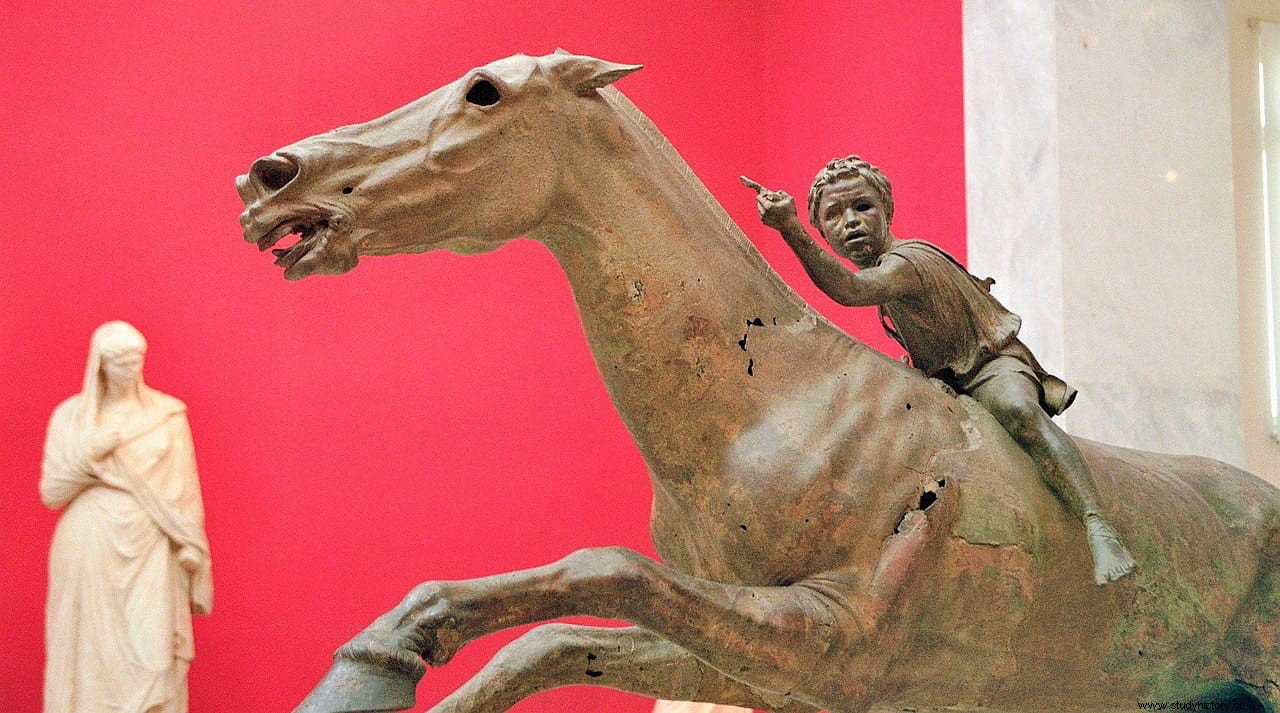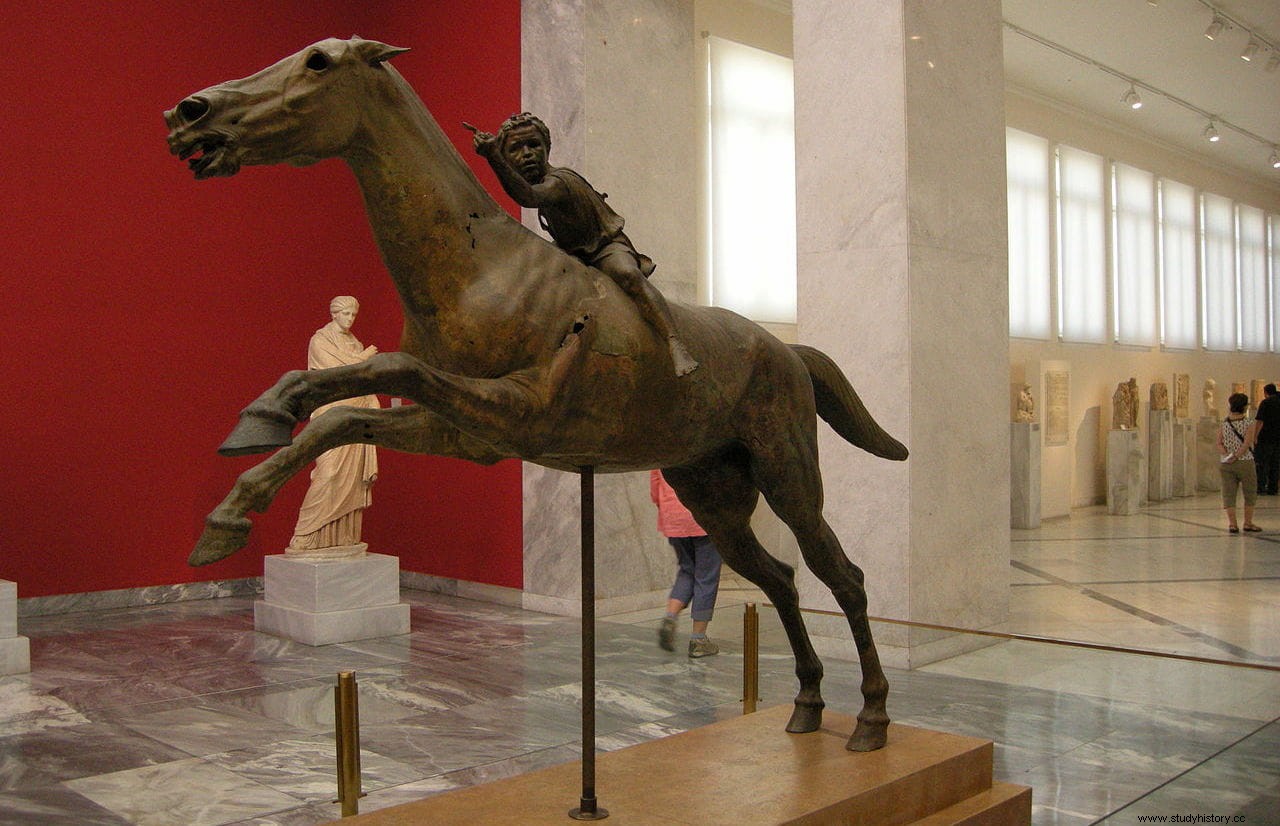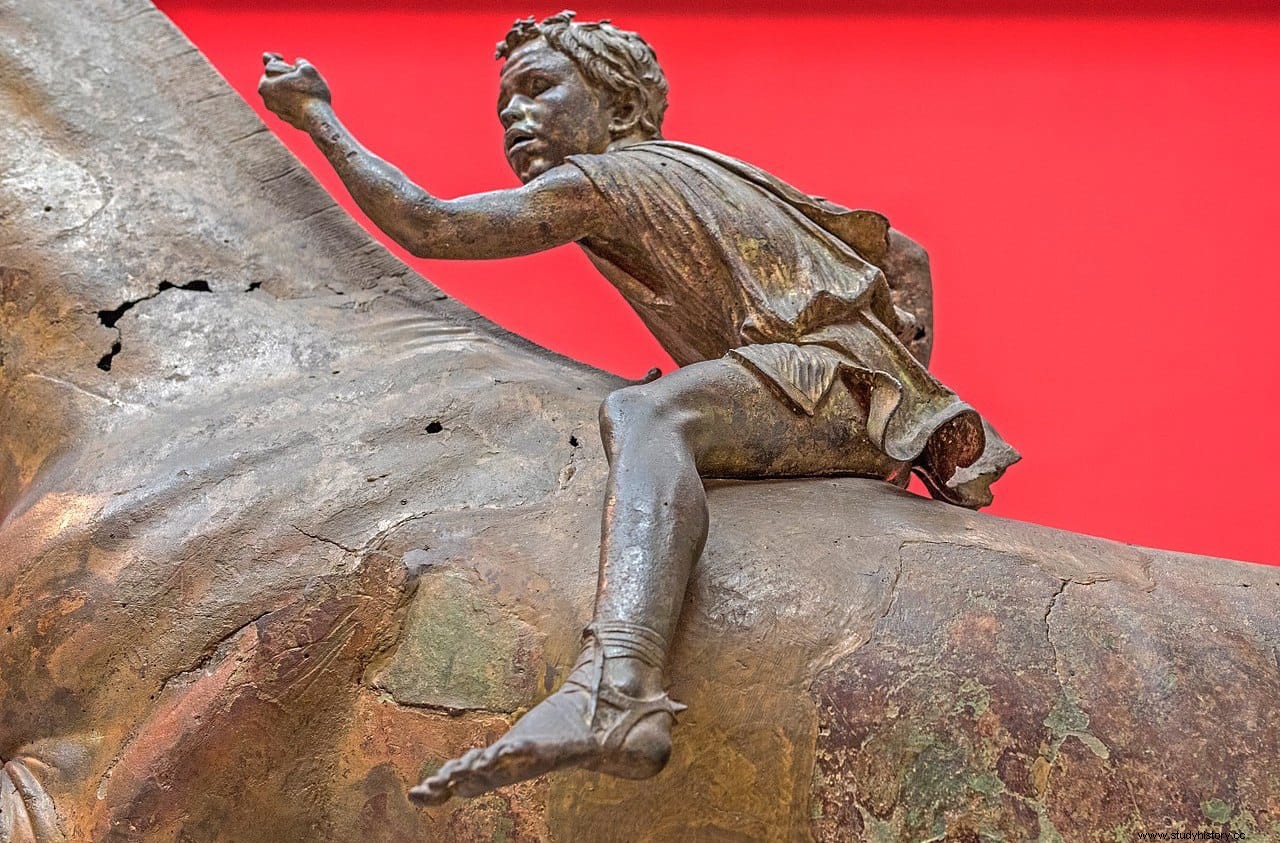In the article that we dedicated to the famous Riace bronzes, we said that this discovery, made in 1972, was important because very few bronze sculptures from Ancient Greece had survived to this day. The reason is that most of them were melted down again in later times to use the bronze in the manufacture of other objects.
Among the few bronze statues from Ancient Greece that we can see today are Riace's own bronzes, the Charioteer of Delphi, the Croatian Apoxyomeno or the cape god Artemisius (representing Zeus or Poseidon).
But also another sculpture found in the same shipwreck as this last one and, although less known, no less spectacular for that. It is the Horseman of Artemisium.

In 1926, the wreck of a Roman ship from around the middle of the 2nd century BC had been found in the sea, off Cape Artemisium on the island of Euboea. that transported Greek works. Little by little, bronze pieces and parts of sculptures were recovered from it, under the direction of the archaeologist Georgios Economos, until the exploration of the ship was definitively interrupted in 1928 due to the death of one of the divers.
But earlier that same year, 1928, two of the recovered pieces were the front part of a large-scale bronze horse and a nearly complete rider. Years later, in 1937, a fisherman caught the hindquarters of the horse with his nets, whose restoration was not completed until 1972, joining it to the rider and exhibiting them together for the first time in the National Archaeological Museum of Athens.
The sculpture is very close to life-size in scale with a length of 2.9 meters and a height of 2.1 meters. It shows the horse running into a gallop and the little rider sitting on it and looking back over his shoulder.

Wear marks on the horse's head and a pin under the chin support the idea that he wore an elaborate bridle, now lost along with the reins. The sculptor, whose name we do not know, managed to masterfully capture the emotion and vitality of a horse race in full action.
The researchers dated the ensemble to the second half of the 2nd century BC. (circa 140 B.C.), and its importance lies in several respects:firstly, it is one of the few original large-scale bronzes securely dated to the Hellenistic period; furthermore, the sculptural group is unusual and practically unique in combining an athletic figure and an animal; and finally, it would be the only Greek sculpture in bronze of a horse that has survived to the present day (and possibly together with the horses of Saint Mark, which are Roman, the only ones from all of Antiquity).

According to Sean Hemingway, the rider's skin originally wore a black patina and his physiognomy is that of an Ethiopian but his hairstyle is Greek, implying that he is of mixed heritage. Most likely a professional or trained rider . Contrasts its small size, just 84 centimeters tall, compared to the horse, which suggests that it may represent a child of about 10 years. In addition, the original function of the sculptural group would have been the dedication, installed in a sanctuary to honor one or more victories in horse racing .
It is not known where the sculpture came from, but Sean Hemingway and other experts believe that it was most likely part of the loot obtained by the Roman general Lucius Mummius in the destruction of Corinth in 146 BC, who would have given it to King Attalus II. , which was sending her to her capital Pergamon when the ship was shipwrecked in the Trikiri Channel north of Euboea.
Considered today as one of the most impressive and moving sculptural groups of Greek Antiquity, it is permanently exhibited in the National Archaeological Museum of Athens.
